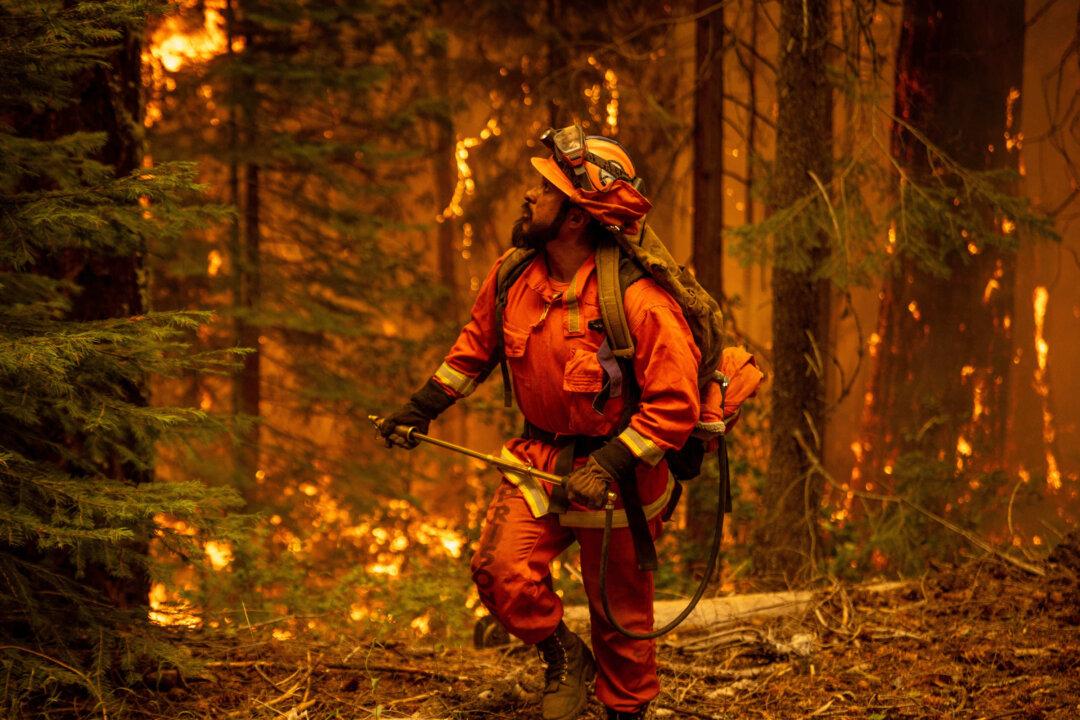The Park fire—California’s largest and currently burning through Northern California—has grown to nearly 671 square miles, mostly in Tehama County, as firefighters battle winds and weather to contain it.
The fire was 38 percent contained by Monday afternoon, according to the California Department of Forestry and Fire Management (Cal Fire).





